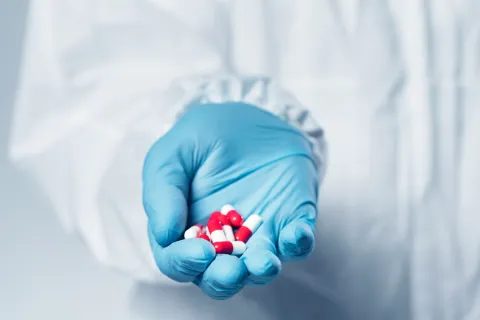
Health-based Exposure Limits (HBEL), also referred to as Permitted Daily Exposure (PDE) or Acceptable Daily Exposure (ADE) values, are used to calculate Maximum Allowable Carryover (MAC/MACO) or Maximum Safe Carryover (MSC) limits in pharmaceutical cleaning validation. Similarly, Occupational Exposure Limit (OEL) values help ensure that the airborne concentration of pharmaceuticals is within acceptable limits so that workers are safe in manufacturing settings.
There has been a paradigm shift in the pharmaceutical cleaning validation process post-implementation of the European Medicines Agency (EMA)’s guideline on “setting health-based exposure limits for use in risk identification in the manufacture of different medicinal products in shared facilities (EMA/CHMP/CVMP/SWP/169430/2012).” The guideline emphasizes the determination of PDE values based on highly scientific methodology and approaches. This guideline, along with others from various Regulatory agencies, strongly advocates for the adoption of a health-based risk assessment approach in the PDE determination strategy.
This blog is a high-level reflection of the best practices adopted by our toxicologists for the development of PDE/ADE or OEL reports at Freyr. The process can be carried out using the following seven (07) steps, which ensure a methodical flow while determining HBEL requirements:
- Understanding the Compound
- Conducting an Effective Literature Search
- Summarizing Data/Information in a Logical Manner
- Selecting PODs
- Using Adjustment Factors
- Conclusions and Recommendations
- Compliance and Other Important Considerations
Let us now explore each step, in detail, for an exhaustive understanding of the practices:
- Understanding the Compound
It is essential to understand the compound’s pharmacologic class, mechanism of action, and indications right at the outset, before devising an appropriate PDE determination strategy. This information helps plan an effective literature review, select an appropriate read-across strategy if required, and adopt any other specific approach.
- Conducting an Effective Literature Search
A well-defined and thorough literature review strategy is a crucial aspect of a high-quality PDE report. It should have appropriate checklists of resources from where the most relevant data/information can be obtained. Missing any important information may compromise the quality of the report and affect the overall conclusion. Similarly, providing a lot of unnecessary or irrelevant information is a hindrance to making appropriate scientific judgments. Hence, a planned and well-documented literature review process and the ability to sort relevant information are key to drafting high-quality PDE reports.
- Summarizing Data/Information in a Logical Manner
Once the data/information is collected, it is important to categorize that information logically under appropriate headings/subheadings. The data/information should carry the appropriate citations of the sources. It should be summarized in a tabular format wherever required. Moreover, appropriate conclusions should be drawn for each hazard so that the reader/reviewer can easily understand the takeaway message.
- Selection of Point of Departure (POD)
This is the most important element of any PDE or OEL report, which has a direct impact on the final PDE or OEL value. Depending on the type and relevance of adverse effects reported in various non-clinical or clinical studies, one (01) or more Points of Departure (PODs) could be selected for a specific compound. It is also important to provide a sound scientific justification/rationale for each selected POD (for example, how a specific study/dose is relevant to PDE or OEL determination). This requires a critical assessment of all available data concerning adverse and non-adverse effects and their potential relevance in human risk assessment. In addition to non-clinical studies, a thorough assessment of adverse effects reported in clinical studies and post-marketing experience provides valuable insights into the selection of appropriate human dose as one of the PODs.
- Using Adjustment Factors
The EMA and International Council for Harmonisation of Technical Requirements for Pharmaceuticals for Human Use (ICH) (Q3C and Q3D) guidelines contain general regulations on the overall approach for selecting various adjustment factors (F1–F5). However, the toxicologist should apply their judgment to understand how to use the adjustment factors based on the perceived risk and/or other considerations like PK correction, accumulation adjustment, and the use of any additional modifying factor to account for any residual uncertainty in the POD study. They should provide a clear and sound scientific justification/rationale in support of each adjustment factor used in the calculation. Any inconsistencies or inappropriate use of adjustment factors may lead to overtly conservative or unreasonably high PDE or OEL values. A well-trained and qualified toxicologist would generally follow a pragmatic approach grounded in a critical assessment of all available data/information and potential risks.
- Conclusions and Recommendations
A high-quality PDE or OEL report should have a proper conclusion with the derived PDE or OEL value(s) from different PODs and a final recommended PDE or OEL value. Generally, the lowest PDE or OEL value is considered final and is recommended in the reports. However, the toxicologist may recommend a higher value based on its human relevance and back it up with appropriate scientific rationale.
- Compliance and Other Important Considerations
The toxicologist is responsible for ensuring that the PDE report complies with the recommendations of the EMA or any other country-specific guidelines and regulations, if applicable. The report should contain a summary page (generally the first or second page) with details of the compound, recommended PDE or OEL values (route-specific, if required), details of the POD study, including the No Observed Adverse Effect Level (NOAEL)/ No Observed Effect Level (NOEL), or the dose selected for the final PDE or OEL value calculation.
The summary should also include a list of hazards to be highlighted, as per the EMA guidelines. A high-quality report shall carry a detailed reflection on the PDE or OEL determination strategy and methodology adopted, with specific reference to the guidelines followed or any other scientific publications used in the generation of the report.
Overall, the PDE or OEL report should be a comprehensive scientific document containing complete details of the methodology adopted, along with a summary of the pharmacology, pharmacokinetics, and toxicology, including the adverse effects in humans. Sponsors should evaluate the qualifications and experience of the toxicologist and qualify the PDE or OEL report service provider (supplier) as per the current Good Manufacturing Practice (GMP) requirements; in addition, they need to maintain the qualification records. Our highly experienced and qualified team of toxicologists (certified by the European Registered Toxicologists [ERT] and the Diplomate American Board of Toxicology [DABT]) at Freyr have developed numerous high-quality PDE and OEL reports for hundreds of global pharmaceutical companies. Contact us for assistance with your PDE/ADE or OEL requirements!









